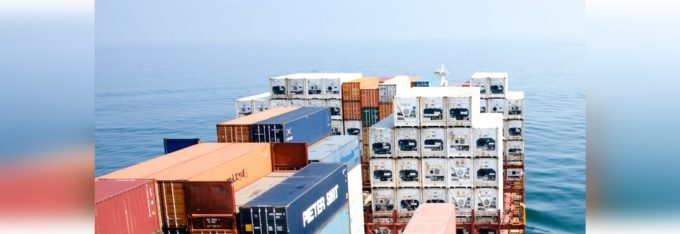Feu options for carriers as spot market rates under water
Long-term contracts a hard sell
TFII: SOLID AS USUALMAERSK: WEAKENINGF: FALLING OFF A CLIFFAAPL: 'BOTTLENECK IN MAINLAND CHINA'AAPL: CHINA TRENDSDHL: GROWTH CAPEXR: ANOTHER SOLID DELIVERYMFT: HERE COMES THE FALLDSV: LOOK AT SCHENKER PERFORMANCEUPS: A WAVE OF DOWNGRADES DSV: BARGAIN BINKNX: EARNINGS OUTODFL: RISING AND FALLING AND THEN RISING
TFII: SOLID AS USUALMAERSK: WEAKENINGF: FALLING OFF A CLIFFAAPL: 'BOTTLENECK IN MAINLAND CHINA'AAPL: CHINA TRENDSDHL: GROWTH CAPEXR: ANOTHER SOLID DELIVERYMFT: HERE COMES THE FALLDSV: LOOK AT SCHENKER PERFORMANCEUPS: A WAVE OF DOWNGRADES DSV: BARGAIN BINKNX: EARNINGS OUTODFL: RISING AND FALLING AND THEN RISING

Today’s Shanghai Containerized Freight Index (SCFI) offered some positive news for the container lines.
Overall, the SCFI comprehensive index ticked up 3.36 points to 893.88, which compares with the reading 12 months ago of 878.27, when the market was beginning to soften.
The Asia-North Europe component of the index edged up $13 to $948 per teu, while for Mediterranean ports there was an increase of $14 to $895.
On the transpacific tradelane, the spot rate for the US west coast fell slightly, by $6 to $2,068 per 40ft, and for east coast ports, the rate inched up by $3 to $3,102 per 40ft.
These rates are significantly higher than those of a year ago when the SCFI recorded a spot rate of $1,641 and $2,620 per 40ft, respectively for the US west and east coasts.
Hapag-Lloyd said today that it had seen a recovery in freight rates in the third quarter and that volumes were “very strong” across its entire network.
The carrier’s positive outlook followed the news it had suffered a $122m loss in the first six months.
And this followed Maersk’s profit warning on Tuesday, which had added that “spot rates have restored after a significant drop in Q2, and volumes are growing in line with the market”.
Higher fuel costs, which the carriers were unable to get fully compensated for, along with stubbornly low freight rates have destroyed the balance sheets of carriers in the first half of the year.
The container lines are now dependent on a good peak season and to holding rates as high as possible in the weaker demand last quarter in order to restore profitability, or at least reduce the extent of the full-year loss.
Moreover, the container lines need to be on the front foot when contract negotiations commence at the end of the year for Asia – Europe and for the transpacific in the spring of 2019.
In order to achieve this the carriers are aggressively cutting capacity and off-hiring as much tonnage as possible in order to tighten supply.
Hapag-Lloyd chief executive Rolf Habben Jansen said today it would “trim capacity in services where we are losing too much money”.
He also added that the carrier would seek to negotiate rate reductions on terminal contracts and would be “critically reviewing the economic viability of our ship systems” with a view to reducing its costs.
Comment on this article